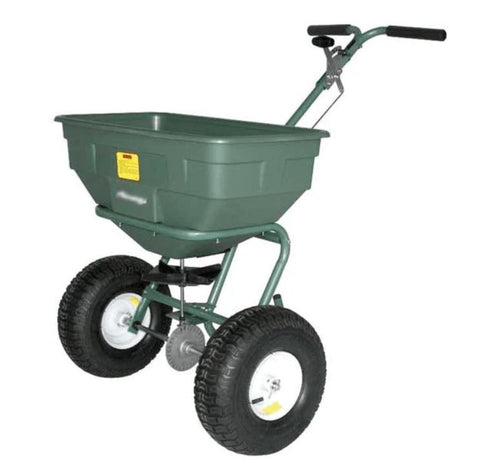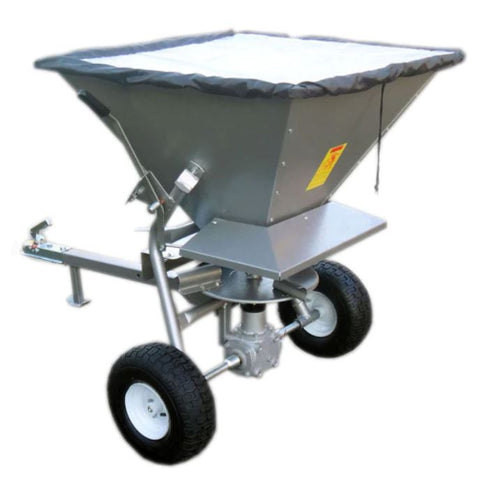As the seasons change, the need for maintaining lawns, gardens, and outdoor areas becomes more evident. Whether it’s prepping for winter by laying down salt & grit for roads, drives, and paths, or seeding and fertilizing your garden for spring, having the right tools is essential. This blog aims to answer some frequently asked questions related to Pedestrian and Towable Salt, Seed, & Fertiliser Spreaders.
What are Pedestrian Salt, Seed, & Fertiliser Spreaders?

Pedestrian Spreaders are walk-behind machines that allow for easy application of various materials. These spreaders are often manually pushed and come with adjustable settings to control the amount and range of material being spread.
What are Towable Salt, Seed, & Fertiliser Spreaders?

Unlike pedestrian models, Towable Spreaders are designed to be attached to vehicles like tractors or ATVs. These are excellent for covering larger areas and can handle greater quantities of material.

What materials can I spread?
Both Pedestrian and Towable spreaders are versatile. They can be used for spreading salt & grit for roads, drives, and paths during winter, and can also be used for spreading seed and fertilizers during the other seasons.
How to Choose Between Pedestrian and Towable Spreaders?
Size of the Area
Pedestrian Spreaders: Best for small to medium-sized areas like home gardens and small commercial spaces.
Towable Spreaders: Ideal for large areas like farms, sports fields, and public parks.
Type of Vehicle
If you already own a tractor or ATV, a Towable Spreader might be more convenient and cost-effective.
What are the Key Features to Look for?
Capacity: Know how much material the hopper can hold.
Spread Width: Look for adjustable spread settings.
Build Material: Corrosion-resistant materials are preferred, especially for salt & grit for roads, drives, and paths.
How Do I Maintain My Spreader?
Regular cleaning is crucial, especially after spreading corrosive materials like salt. Lubricate moving parts as per the manufacturer’s guidelines.
Where Can I Buy Salt & Grit for Roads, Drives, and Paths?
Online platforms like Lifting365 offer various kinds of materials for your spreaders. Always make sure to read the compatibility and application guidelines.
Are these Salt Spreaders Environmentally Friendly?
Look for spreaders with precision controls to avoid over-spreading. This not only saves money but also prevents potential harm to the environment.
Conclusion
Whether you're a homeowner looking to maintain a driveway or a commercial operation with larger needs, understanding the basic functionalities and maintenance requirements of Pedestrian and Towable Salt Spreaders can make your life much easier. Happy spreading!
*This blog is intended for informational purposes and should not replace professional advice.*

